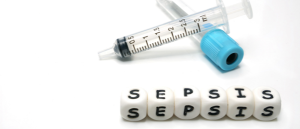
BioTechniques News
Aisha Al-Janabi

Researchers have developed an antimicrobial material that can be used to both treat and prevent infections, helping to combat antimicrobial resistance.
Antimicrobial resistance is one of the greatest public health threats facing the world. To tackle antimicrobial resistance, we need to reduce our use of antibiotics and develop new ways of killing resistant microbes. Researchers across the globe have been investigating ways to do this, and now, a group from Chalmers University of Technology (Gothenburg, Sweden) has developed an antibacterial material, using antimicrobial peptides (AMPs), which can both fight infections and prevent them.
AMPs are potent, broad-spectrum antimicrobials that are part of the innate immune response in humans, animals and plants. Researchers have long sought to understand and harness their antimicrobial properties to treat infections; however, the peptides have a short half-life and are rapidly broken down when they encounter bodily fluids, such as blood, which limits their therapeutic use.
 Researchers identify a promising therapeutic target for sepsis
Researchers identify a promising therapeutic target for sepsis
Autophagy can alleviate sepsis by restoring intestinal barrier function, and now researchers have found a potential therapeutic target to promote this process.
To overcome this, the researchers attached the peptides to small hydrogel particles, which provides a protective environment and increases the peptides’ stability. This resulted in the antibacterial effects of the peptides lasting for up to 48 hours when in contact with bodily fluids, and up to a few years when not, enabling their use in a range of clinical applications.
Using the AMP-hydrogel material, the group developed an antibacterial wound spray, which can be used on infected wounds to treat infections, as well as on new wounds to prevent infections. Unlike many existing antibacterial sprays, it does not affect human cells or interfere with the body’s healing process.
In another project, the group used the material to create a coating for medical devices. When introduced into the body, medical devices, such as implants and catheters, can cause infections. In fact, one of the major sources of hospital-acquired infection comes from the use of urinary catheters. By coating medical devices in the antimicrobial material, the risk of infection is reduced, and infections are prevented, reducing the need for antibiotics. In addition, the coating can be added to existing medical devices, so it is not necessary to produce new ones.
Martin Anderson, the corresponding author, commented: “Our innovation can have a dual impact in the fight against antibiotic resistance. The material has been shown to be effective against many different types of bacteria, including those that are resistant to antibiotics, such as Methicillin-resistant Staphylococcus aureus (MRSA), while also having the potential to prevent infections and thus reduce the need for antibiotics.”
The post Harnessing the power of antimicrobial peptides appeared first on BioTechniques.
Full BioTechniques Article here
Powered by WPeMatico
